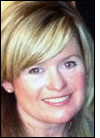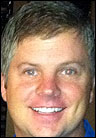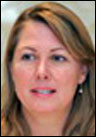Jan 18, 2012Cisco Systems, a worldwide leader in networking, communications and collaboration technologies, has always been ahead of the pack when it comes to leveraging new technologies to solve business challenges. More than a decade ago, the company used Internet technologies to collect financial data from its operations around the globe, enabling it to reconcile income and expenses, and to close its books at the end of every day. Now, Cisco is turning to radio frequency identification technology to manage its vast array of IT equipment.
In March 2011, the company went live with a system that employs EPC Gen 2 passive ultrahigh-frequency (UHF) RFID tags to automatically collect and centralize information regarding the locations of blade servers, networking equipment and other IT assets used within its data centers, as well as within the laboratories that carry out research on next-generation routers, switches and other products.
The system allows workers searching for a particular type of equipment to quickly locate where such items are being utilized, so that they can borrow equipment available for use, which is faster and cheaper than buying a replacement. The system has also reduced the amount of time required for workers to conduct inventory for compliance with the Sarbanes-Oxley Act of 2002—a law intended to make a company's financial reports more transparent and accurate—from several weeks down to two hours.
The project commenced in January 2010, when senior management made a strategic decision to do more to optimize and safeguard Cisco's investment in asset. Maryanne Flynn, the firm's director of operations, and Ted Baumuller, the director of IT, marketing and Cisco.com, were appointed to co-manage the project. Instead of immediately researching the best RFID technology to meet their company's needs, they instead asked those who purchase, use, manage and dispose of the assets what their current processes were, as well as the problems they experienced regarding asset tracking.
"We realized that we needed to look at this first from a policy perspective, then a people perspective and then a process perspective," Flynn says. "We wanted to take a business view of it before jumping into the technology solution. We wanted to be disciplined in making sure we were clear about where we wanted to take this, and how far did we want to take tracking assets from a policy perspective. And then, from a people perspective and a process perspective: What did we need to do to support the long-term goal?"
Additionally, the group worked with a steering committee to clearly define the needs of different organizations within the company. "I'm from finance and operations," Flynn explains, "and Ted is from IT, so we were sort of outsiders taking a look at this across the company to best solve this problem. It was really important that we have strong leadership from a steering committee that represented those teams, such as the engineering teams that do the R&D on our next-generation routers and switches. We needed the support and input of those leaders along the way, so that if we needed to introduce any new policies and processes, they could get behind them and ensure their teams would follow them. They were part of the decision-making from the beginning."
To determine which RFID system was best for their needs, Flynn and Baumuller reached out to Dick Cantwell, the global VP of Cisco's Internet Business Solutions Group and the chairman of EPCglobal's board. Cantwell, who had led RFID initiatives at Gillette and Procter & Gamble (see An Interview with Dick Cantwell and P&G Finds RFID 'Sweet Spot'), used his experience to advise Flynn and Baumuller, as well as connect them with EPCglobal and other industry groups that could help them.
"We also looked at RFID Journal to learn about different types of RFID technologies that were out there," Flynn states. "Through our research and reaching out to our human network, we started to piece together the different location technology options available, including passive RFID, active RFID, GPS and simple bar codes. We did some testing, and realized that passive RFID was our best bet to meet Cisco's needs. From a cost perspective, it was less expensive than active, and we felt it was more flexible."
While performing due diligence on the RFID solutions available, Flynn and Baumuller also worked with IBM to create a centralized database of IT assets, using IBM's Tivoli Asset Management for IT software. In addition, they interviewed a number of RFID solution providers, ultimately choosing RFID Global Solution, located in Reston, Va.
"The choice of our RFID partner was really based on the fact that they had a good understanding of the business process behind the technology," Flynn states. "It wasn't just about getting good read rates. It was also about making sure there was a form factor of the tag that would fit on our equipment. They understood the challenges of who is going to put the tag on and associate the tag with the right asset, who would collect the data and where. They differentiated themselves with being able to understand the whole business process involved, not just the technology piece."
Starting this month, Cisco will be installing a new tag developed by Omni-ID, known as the Prox-NG, measuring 37 millimeters by 12 millimeters by 4 millimeter (1.5 inch by 0.5 inch by 0.16 inch) and featuring a wide read angle for better performance with both handheld and portal readers, can be read not just on metal but also on plastic and in free air. The Prox-NG supports a tether attachment, which is important, as some Cisco assets are too small to affix a label to, so the tag must be hung from the device.
To date, RFID Global Solution has installed fixed portal readers at the entrances and exits of data centers and labs within 28 Cisco facilities throughout the United States. The portals use either Impinj Speedway Revolution R420 interrogators or Motorola Solutions FX7400 fixed readers, depending on the requirements. For doorways that were wider, were likely to experience high densities of tagged objects moving through them or faced other challenges, the company opted for the higher-end Revolution reader, as well as Motorola's MC9090-Z handheld units used for performing inventory counts. Approximately 500 fixed readers and 200 handhelds are expected to be deployed by mid-2012, the company reports.
"We've used a lot of different configurations to come up with the optimal performance and fit for Cisco's needs," says Diana Hage, RFID Global Solution's CEO. "In some cases, we used flush-mounted readers and slim-profile portals, because Cisco wants RFID to be ubiquitous but not interfere with the work people are doing."
When someone creates a purchase order for a new piece of equipment in Cisco's financial application, that information is imported into RFID Global Solution's Visi-Trac software. Once the item arrives at a central receiving facility, it is tagged, and employees at the facility associate the tag's ID number with the asset in Visi-Trac. That information is then automatically forwarded to the Tivoli Asset Management for IT software.
In addition to automatically tracking when an object moves from one location to another, the system allows users to set up permissions and receive alerts. For instance, a manager might indicate that a particular piece of equipment cannot leave the lab. In the event that the object's tag were then read at an exit, the manager would be notified immediately.
Cisco has been tagging all new assets purchased since March, and has begun tagging select legacy assets in order to make it easier to locate equipment requiring frequent calibration, for example. To date, more than half a million items have been tagged.
"From a business perspective, the project has been a success, because we now have the ability to find and locate assets a lot faster than ever before," Flynn says. "By site, we've cut our cycle-count time down from a few weeks to a few hours. Our employees like it because they can get access to devices quickly for, say, a data-center deployment."
Flynn estimates that the system will deliver a return on investment within 24 to 36 months. She and Baumuller will be featured speakers during RFID Journal's Using RFID to Manage IT Assets virtual event, to be held on Feb. 28, and both will also offer a keynote presentation at RFID Journal LIVE! 2012, which will take place on Apr. 4, 2012, in Orlando, Fla.




